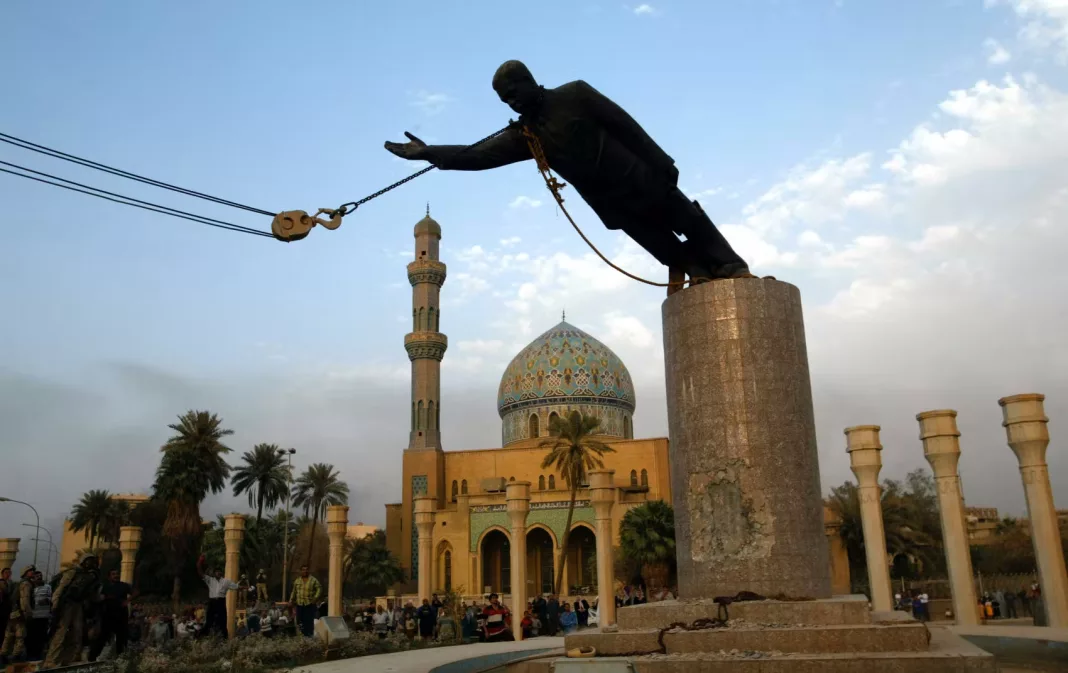Tyrants should only be brought down by their own people; they become martyrs when brought down by foreigners. This axiom used to be applied to Napoleon, and there is no better example of it in our own century than the case of Saddam Hussein. Saddam was a maniac and a tyrant, but tyranny is always preferable to anarchy, and anarchy was what followed his deposition by the US-led invasion in 2003. The death of hundreds of thousands and decades of political chaos were the only products of the Iraq War.
Steve Coll’s new book is the best which has been written so far on the decades of leadership, geopolitics, strategy, and espionage which led to the invasion. Significantly, it draws on newly declassified resources, including almost 1,000 hours of tape recordings of Saddam’s conversations with comrades and generals. The result is a detailed, at times uncomfortably intimate, portrait of him. He was a murderous dictator, a military aggressor obsessed with conspiracies and paranoid for decades about American intentions. He also enjoyed the novels of Hemingway and Naguib Mahfouz, and at the time of the US invasion was applying himself to the study of Arabic grammar. Coll’s uniquely multifaceted picture of him will go down in history as the most memorable one. For that portrait alone, this book would be well worth reading.
While of course Saddam is the “main character”, Coll has an equally cool and sharp eye for other world leaders –particularly US presidents. Bill Clinton is found complaining that he has no telephone access to that “sonofabitch” Saddam; George W. Bush “might just have been bored” when he rolled his eyes upon learning that some Iraqi weapons had been destroyed.
Saddam’s career-long paranoia about American intentions was probably justified – not only by our retrospective knowledge twenty years later, but by the skulduggery that was underway well before 2003. During the Iran-Iraq War, for instance, the Reagan Administration gave Saddam detailed maps to help him fend off the Iranians while simultaneously approving arms sales to Tehran.
A far greater historical irony is that, when Britain and the US removed Saddam, they were removing a regime for which they themselves had created the conditions: Britain seventy years earlier by occupying and then withdrawing from an unstable Mandatory Iraq, and the Americans in 1963 by sponsoring the coup which first brought Saddam’s Ba’athist party to power.
The central misunderstanding which Coll recounts – the one which, finally, ensured the 2003 invasion and the resultantbutchering of hundreds of thousands of Iraqis – regardsweapons of mass destruction (WMD). Iraq had no active weapons, but “after 1991, Saddam assumed that the C.I.A. knew that he had no WMD, and so he interpreted American and British accusations about his supposed nukes and germ bombs as merely propaganda lines”. By the time each side realised its miscalculation, it was too late.
Much of the overall scope and detail of this book defy summary, and to understand every facet of US-Iraqi relations, it must be read in full. Every chapter, with thriller-like headings such as “Project 17” or “The Edge of the Abyss”, makes for gripping reading. By means of its cold, crisp prose and its grasp of high-level espionage, The Achilles Trap is as readable and complex as a John le Carré novel while managing at the same time to be a serious piece of historical research.


